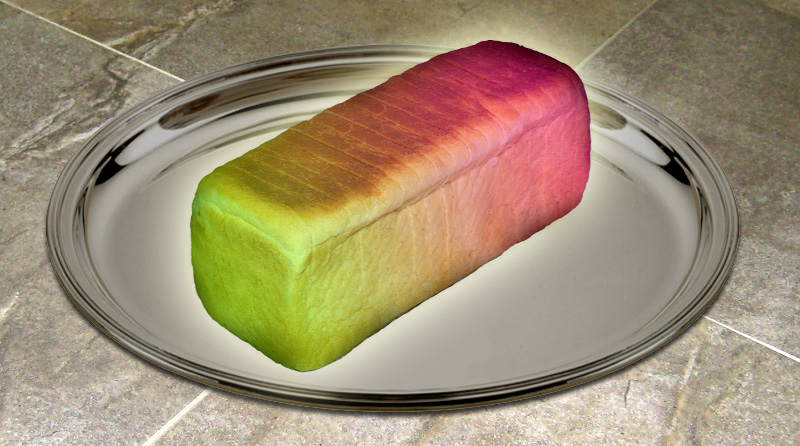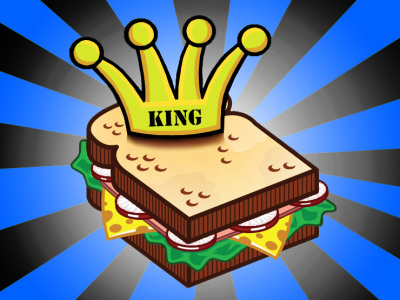A Moron’s Guide to Healthy Eating
Does anyone actually try to help you make better choices? How almost every guide gets it wrong.

Imagine yourself at a supermarket, imagine you had never ever seen processed or packaged food before, what would you buy? Because whatever you would choose then, is probably better than the choices you’re making now.
Now I bet you’re thinking, “But I read labels! I understand what to look for! I know so much! I swear on me mum!”, or something like that. Which is probably denial speaking. Because let’s face it, processed food is full of stuff we didn’t evolve to eat. The added almond extract might be your friend, but the sodium benzoate isn’t.
Being a caveman may not be such an insult after all.
Of course there’s an endless stream of these articles popping up. They all tell you what to eat, or not to eat. They all tell you to read labels, or follow incomprehensible nutrient charts, the worst ones will even tell you to spend most of your day scheduling the right foods for the right time.
When you read the average click-farming post that tells you what to eat, you might notice a trend, if you take the language literally. Namely, just how much of the support for their ideas, and suggestions, comes from an associative fallacy. They will tell you how good or evil an ingredient is, by telling you what else it’s found in.
- Hey, I don’t want to use toothpaste with fluoride, it’s found in rat poison!
- I hope I never have heart failure and require taking warfarin, that’s also in rat poison!
The mere suggestion that things you ingest contains rat poison can make you panic, even just a little. This little panic, like a roller-coaster, heightens your sense of alertness, but doesn’t sharpen your logic skills. It could even make you down right gullible, though positive attributes can foster a similar excitation.
You might not even know that most rice contains naturally occurring arsenic, yet more rat poison.
Sometimes, we need to step away from the internet, the tv, magazines, and billboards.
For example, [sic] huge study conducted by a team of researchers at Harvard Medical School found that the participants who ate the greatest amounts of refined grains were most likely to gain weight over the course of twelve years.
Indeed, they were almost 50% more likely to gain weight than the people who eat the most wholegrain products.
See that? See what they did there? Yep, associative statement. Linking the symptoms as proof of the cause. We all drink water, so what if you found out that everyone who drank water died? Would you stop drinking water?
People who don’t care about the ingredients they eat are more likely to gain weight; while the bread may be a factor, the problem is not limited to bread at all. They obviously aren’t following dieting guidelines. Even the poorly thought out, and totally misguided ones.
Associations are used to backup claims with little evidence, best to discard associative statements altogether.
Wholegrain breads are rarely any better for you, read the label if you doubt this, and multi-grain breads are primarily bleached wheat flour as well. Read labels long enough, you’ll realize that the healthiest breads are the ones you won’t eat. Instead of focusing on the whiteness of the base flour, look for bread with seeds, like flax, sunflower, sesame, etc. Seeds contain amino acids and proteins that are hard to get elsewhere, so the more seeds your bread has, the more you get out of that slab of wheat.
Whole wheat is the major source of gluten in the modern diet, and we’re beginning to change our view of wheat, which was, in the recent past, considered extremely healthy.
Oh look, they admit that whole wheat bread is actually worse for you than white bread!
Let’s take a look at some of the recommendations:
Even the sandwiches that are advertised as lighter options for dieters may contain at least 50% of your recommended daily intake of fat.
The ideal sandwich is made with wholemeal bread, healthy salad vegetables, a little margarine, and a light dressing.
Yes please, let’s replace that tasty fat with artificial fat, or toxic edible oil product, and heavy doses of sodium. What could go wrong?
Although artificial sweeteners contain no calories, many of them (such as aspartame) seem to impair your body’s ability to detect whether your stomach is full, triggering overeating and stronger cravings that can thwart your attempts to lose weight.
Tell your kids to reach for a radish, and some hungarian salami on a piece of rye bread next time they want a snack, see how that plays out in North America. But, at least you don’t have to give them sugary desserts after every meal, that’s a good start. Munchkin doesn’t need a treat, really.
But wait! There’s More! It isn’t just the aspartame killing you.
Mold inhibitors are preservatives found in nearly all diet sodas that damage the DNA in the mitochondria, and commonly cause hives, asthma and other allergic reactions.
So kids, don’t eat sugar, and don’t eat artificial sugar. How can anyone get ahead with advice like that?
High fructose corn syrup is a main ingredient in ketchup, and most corn syrup is made from genetically modified corn. Additionally, one tablespoon of ketchup contains four grams of sugar, which is one-fourth of the recommended daily intake of sugar for children.
Add to that the MSG, chemical anti-foaming agents and artificial colorings found in ketchup, and you’re dipping your fries into a red-colored chemical stew disguised as a wholesome, all-American condiment.
Make sure you don’t get into the habit of adding ketchup to everything, especially kids, not only does it set the habit for later, it’s not even real food. It’s too bad gluten-free food, rice cakes, and other supposedly healthy foods taste worse than waxed cardboard, they almost beg you to save them with ketchup.
Sounds like damned near everything you eat is tainted doesn’t it? Well, yes it is, unless you eat raw.
The food industry is full of vested interests, full of marketing wizards, full of lobbyists, and also full of BS. Then you have the isolated interests, the ones peddling servings of acai or goji berries as a way to live forever, or the ones talking about the virtues of eating some bark or grass you aren’t familiar with.
I’m sure eucalyptus trees are very nutritious, koala bears live on them exclusively, but I’m not putting eucalyptus in my salad, no matter how fresh my breath would smell. Because it isn’t just about how nutritious a thing is, but also whether we are designed to consume it. There are things we just can’t process.
Cow’s would die if we fed them like humans, and we would do quite poorly eating their diet. They are designed to eat cellulose rich foods, we are designed to eat faster digesting content, like fruit and meat.
You might think our pets are a lot like us, and it’s true, to a point. A trash compactor like a yellow lab, might do alright eating table scraps entirely, but carnivores like Fooffy the cat, would really struggle with a turnip and rye bread.
You won’t find any network-marketing companies that will try to sell you onion supplements though, at least not until they find a new strain of blue onion, from some underground cave, in Costa Rica.
You might be wondering then, is there an alternative to the ordinary packaged or pre-made foods North Americans rely on to stay fat? Well now there is! Sort of…
There’s a smart (or crazy) company that did manage to come up with a food substitute, Soylent is a vegetarian powder designed to give you all the important nutrients, without the challenge of enjoying your food! Awesome.
There’s only a slight problem, and they allude to it as subtly as possible, it isn’t enough:
A meal of Soylent is pretty much whatever you’d like it to be, but generally is between 500-600 calories. A bag of Soylent is 2000 calories and makes around 2000ml of Soylent. If you would like to eat only Soylent during the day, that is an option, but you can also eat other foods as well.
We recommend taking a look at our nutritional information and deciding what mixture of Soylent and regular food you would like to eat in your daily life. Please take a look at our nutritional facts here.
Someone once told me, that the only way to eat healthy in a supermarket, is never to leave the perimeter, or the outermost aisle. And they are right; every supermarket, from A&P to Walmart, always places the fresh produce, the fresh cut meats, the fresh breads, and dairy products on the outer ring of the store. The healthy foods are right at your finger tips, and you don’t even have labels to read, how cool is that?
You might not believe it’s possible, but you can actually shop entirely without entering the center aisles. Except cleaning supplies, but this article is about food, stop being pedantic.
Think of the rows of packaged food in the middle of the store like shark infested waters. You don’t want to spend time wading through them, if you really, really, really, need, need, need something, get it, just don’t linger.
The monosodium glutamate has a vicious bite.
Leave A Comment
You must be logged in to post a comment.

